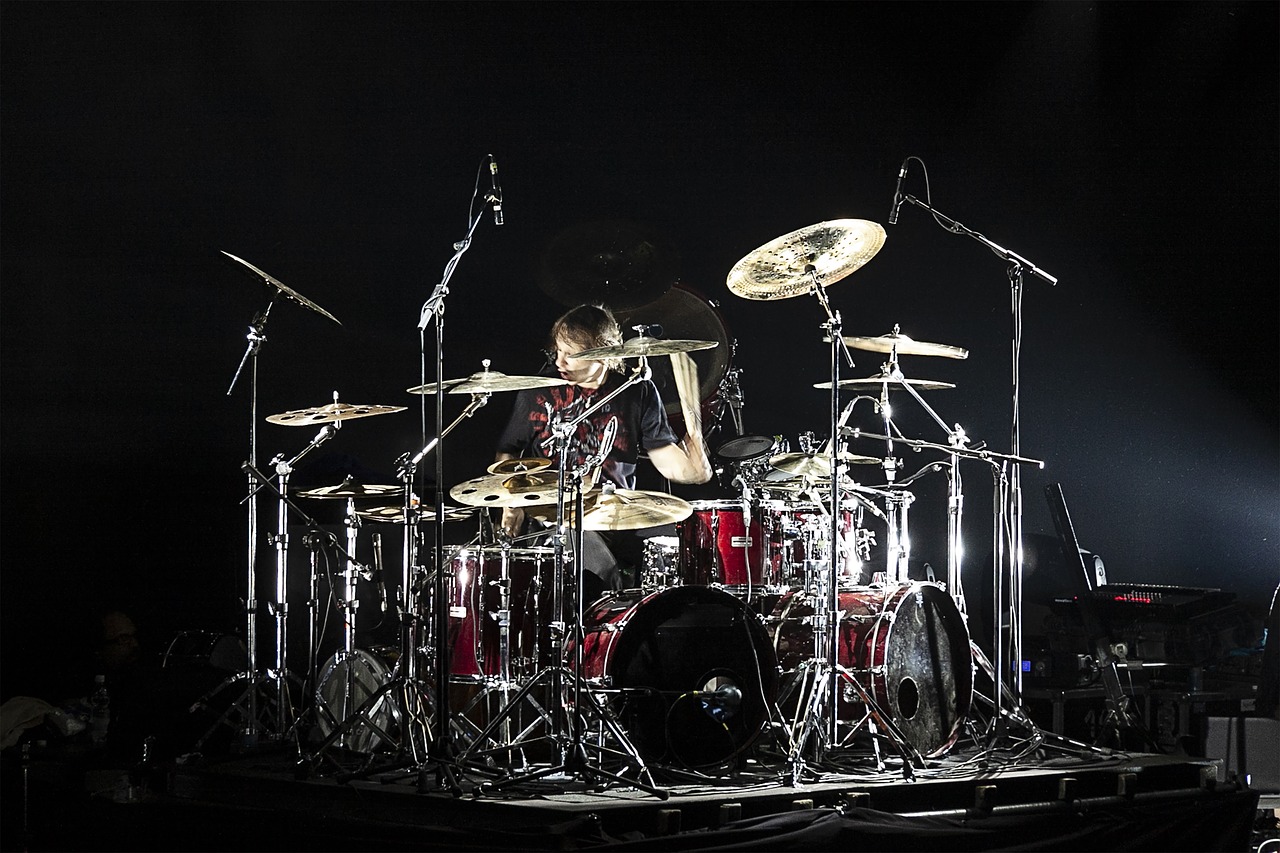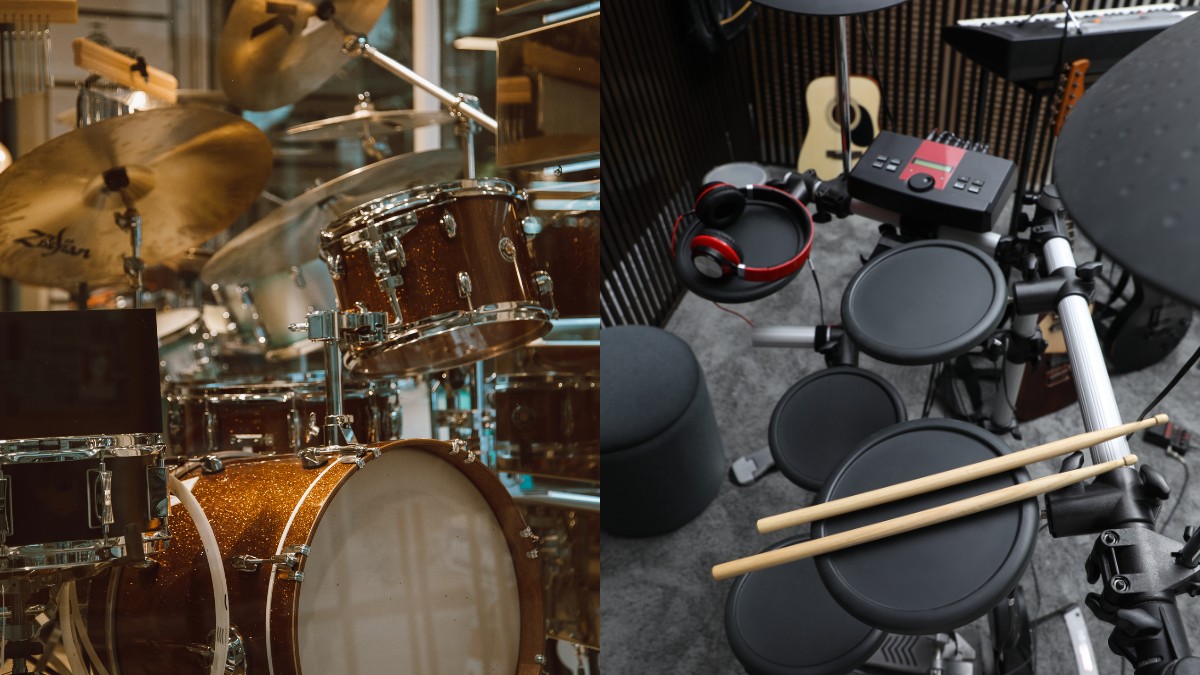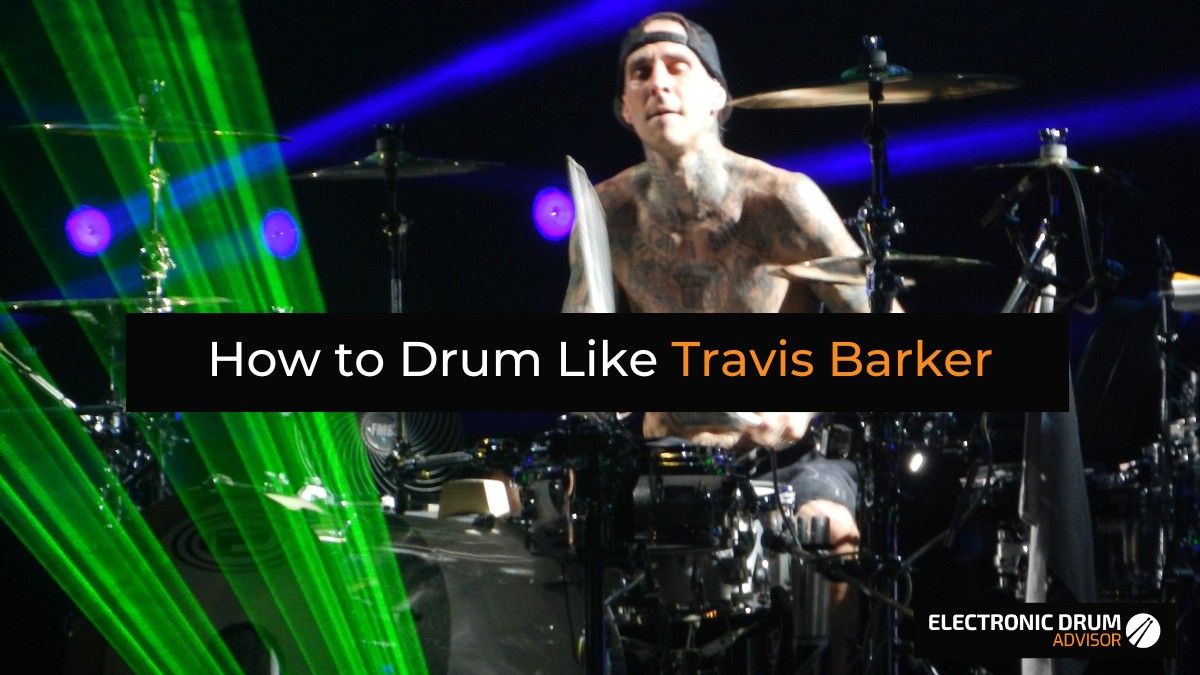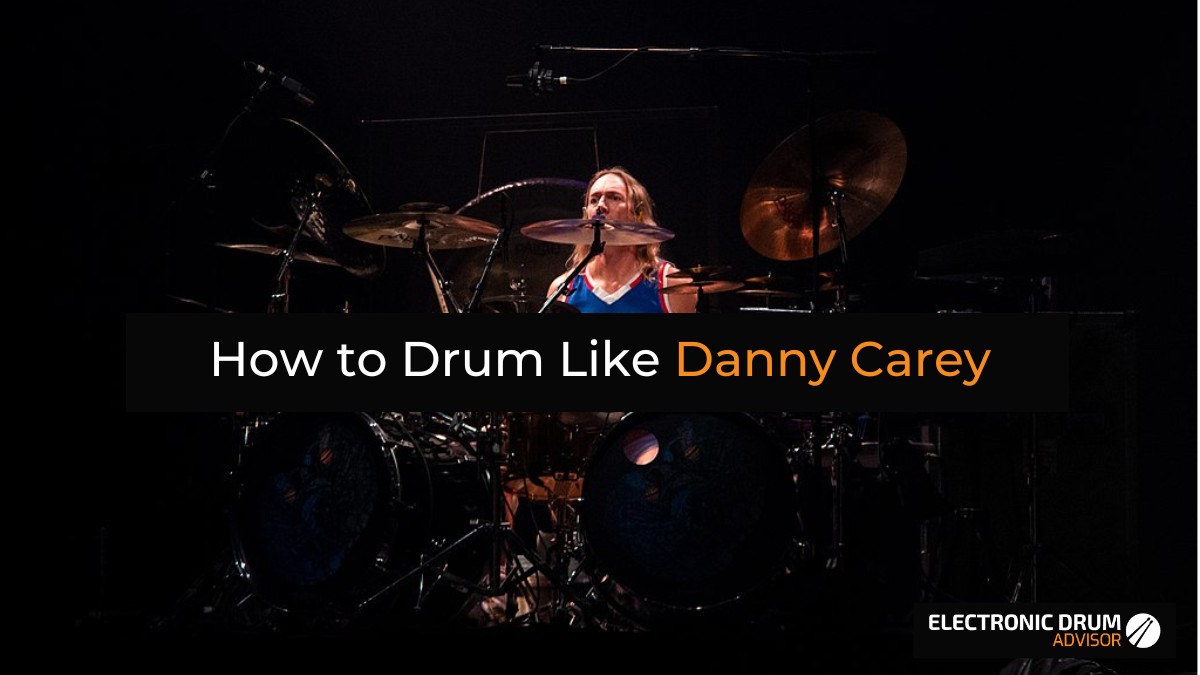How to Play Blast Beats on Drums

A blast beat is a type of drum beat commonly associated with more extreme forms of metal music. Playing blast beats involves playing the snare drum, bass drum, and hi-hat or ride in quick succession.
In its original form, the blast beat was an explosion of percussion used to create non-metric white noise. It wasn’t (necessarily) played to the metronome.
It was sheer high tempo mania to create sonic violence with repeated sixteenth-note hits divided uniformly among the kick, ride, snare, and crash. It is believed that the blast beat came from the early punk skank beat, the one you can hear in Slayer’s Raining Blood, a minute into the song.
Nevertheless, as it evolved to sync with the metronome in the hands of more modern heavy metal bands, they ratcheted up the speed, enflamed the intensity, and greatly increased the technicality. In this regard, Pete Sandoval (Morbid Angel, Terrorizer) is credited by many as the father of the blast beat, at least in its modern avatar.
You can hear an early version of the blast beat in King Crimson’s The Devil’s Triangle or even Bill Ward having a go at it in Black Sabbath’s War Pigs.
The term ‘blast beat’ was coined by Mick Harris, the speed-hungry maverick who played drums for a British grindcore band Napalm Death in the ’80s. Despite its origins in punk and grindcore, the blast beat has become popular in metal genres like black metal and death metal.
How to Play a Blast Beat
Blast beats are simple to play but not easy to maintain at high speeds. At the heart of it, is the single stroke roll, one of the most elementary and essential elements of drumming. If you have already spent the time mastering the single stroke roll, you can start adding a small daily session of blast beats to your routine.
Check out Derek Roddy demonstrating the Black Beat Technique in slow motion:
The following are the three basic playing styles that can be employed to play a blast beat
Single Pedal Blast Beat
Select a slow and comfortable tempo on your metronome. Start with a single stroke roll on the cymbal with one hand and snare on the other. Let the feet in on the action by playing the kick in unison with the cymbal hits. Gradually increase the tempo without compromising clarity. You don’t want any accidental flams happening between the kick and cymbals. Focus on stick control and a measured bounce; do not bounce uncontrollably as you speed up.
Double Pedal Blast Beat
The basic idea of the traditional blast beat stays the same – single stroke roll on the cymbal & snare. But in this economy version, you use a double pedal and play both kicks alternately.
Open Drumming Blast Beat
Open-drumming is very popular among metal drummers. This technique allows them to display their ambidexterity and play lead patterns with their primary (dominant hand). The essential idea remains the same as the single pedal or double pedal blast beat.
Even drummers who play with a conventional cross-handed technique switch to open drumming while playing blast beats. Again, this helps them play the snare with their dominant hand that allows for fast and powerful snare hits. If you are new to open-handed drumming, you need to spend 10 to 15 minutes every day to build up coordination before you make real progress.
Common Variations of the Blast Beat

The traditional blast beat is primarily a high-tempo skank beat that is led by the kick. It can be further characterized are four main types of blast beats:
Gravity Blast (aka single handed roll)
In this variation, you play the snare as a 16th note single stroke roll using the gravity roll technique – with an up and down push-pull motion. Using the rim as a fulcrum for push-pull allows you to play much faster than other techniques but conversely, it also decreases the overall volume. You can learn more about the gravity blast in Johhny Rabb’s book, The Official Freehand Technique. You can hear it in action in Cryptopsy’s Carrionshine, at the 50-sec mark.
Traditional blast (trash metal)
This is the same thing that we have shown in the single pedal example above. It began in early punk and was shot to fame in the thrash metal scene. During its early days, it was called the ‘Slayer’ beat in America because of how often, and how well, Dave Lombardo played it. You can also hear it in action in the intro of Vader’s Silent Empire.
Bomb Blast (aka cannibal blast)
The bomb blast shot to fame in the 90s on the shoulders of Paul Mazurkiewicz, the drummer of Cannibal Corpse. That’s why it is sometimes referred to as the ‘Cannibal blast’. It is a mixture of blast beat and double bass drumming which can be led with the kick playing sixteenth-notes and snare hits on eighth-notes (the traditional beat). Alternatively, many drummers have employed the bomb blast while leading with the snare. You head the blast beat in action in Malevolent Creation’s Tasteful Agony, at the 10-sec mark.
Hammer Blast (aka hyper blast)
This variation shot to fame in the 90s. In the hammer blast, instead of creating a sixteenth note drum line with eighth note snare hits, you play kick + snare (in unison) – playing straight eighth-notes instead of sixteenth-notes. You can either play using a single or a double pedal. Since you only need one strong hand, this is a slightly easier variation for beginners to attempt, but it requires endurance and power at high speeds. You can hear it in action in the intro of Suffocation’s Liege of Inveracity.
Additional tips for practicing blast beats:
- All fast playing techniques like blast beats require accuracy and good finger control. Many famous drummers use a French grip while playing blast beats.
- The easiest way to progress is to practice blast beats for 15 minutes at 60bpm and bump the metronome by 5bpm every day until you hit the target speed (usually 200bpm). Taking it slowly gives you the space to focus on your technique and stick control.
- Blast beats require a lot of endurance and stamina. A rule of thumb is to stick to one exercise and repeat it 40 to 50 times during each practice session.
- The two main things to focus on are – playing clean and even sixteenth-notes, and improving cross-body coordination by alternating drum keys (play between the snare, hi-hat, and kick drum).
- You will need great listening skills to pick up the nuanced variations used by drummers in records and live concerts. The 20+ notes per second flurry makes it nearly impossible to discern the variations. It is better if you try to learn them from instructional videos. Once you have covered the basics, you will benefit from trying out your own variations and modifications.
Blast beats have been employed by everyone from Emerson, Lake & Palm to Fear Factory to Slipknot. They have grown from the early skank beats of punk to the blast beats of grindcore to the trash beats of Slayer to the hyper blasts of Cradle of Filth, and now they hold a special place in the modern extreme metal genres like black metal and death metal.
They display how metal drummers have evolved into enduring beasts with incredulous technique, dynamic control, and exemplary stick control at full-throttle speeds. Though the premise of a blast beat is simple, drummers have galvanized it with multiple variations and rhythmic twists that reflect a lot of skill –both musical and technical.
Summary
Blast beats are a hallmark of modern extreme metal drumming. The origins of the blast beat can be traced back to punk and ska where bands like The Ramones were known for playing fast, repetitive beats at high speeds.
Though the premise of a blast beat is simple, it has evolved into one of the most challenging techniques in metal drumming. Blast beats require extensive endurance and stamina that enables musicians to play 20+ notes per second for long durations without sacrificing musicality or dynamics.
While this may seem daunting to learn, you can start by practicing blast beats for 15 minutes at 60bpm and bumping the metronome by 5bpm every day until you hit the target speed. It is better if you try to learn them from instructional videos instead of trying to mimic songs.
To play this technique well, it is important to practice with a lot of accuracy and control.







